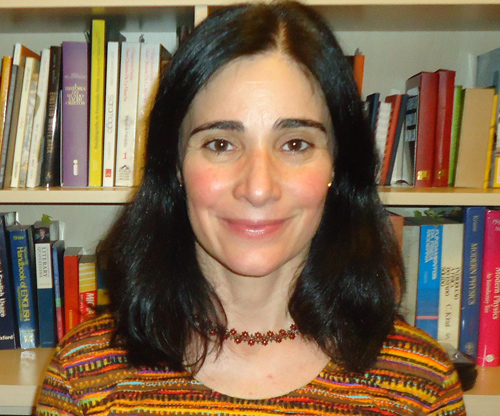
If you’re inside a building right now, chances are parts of it are made of concrete, the world’s most widely used building material. The popularity of concrete, combined with the growing need for more residential and commercial buildings, means that more water is being used in cement and concrete production. But that same water is also needed for human consumption and agriculture.
Stella Bezerra, a recent PhD graduate from the School of Engineering, looked at ways to reduce water usage in the construction industry worldwide. In her home country of Brazil, she wanted to help improve the quality of life for people and their environment – not just the natural environment, but the built environment as well.
“I’m hoping that this knowledge will also inspire current and even future professionals in the field,” says Bezerra, a professor in the civil construction department at the Federal University of Technology (UTFPR) in Curitiba, Brazil. As the population continues to grow, so will the demand for drinking water, housing and infrastructure, she says. “I hope students will also be inspired by this knowledge and manage water usage in a more effective and sustainable way.”
Bezerra’s PhD research looked at how much water is used in cement and concrete production, water use on construction sites and how water can be used more sustainably. She says water usage by the construction industry has not been the focus of much research.
Cement is a fine powder used in concrete production along with sand, gravel and mixing water. The ratio of these components affects the strength of concrete. Floors made of concrete, for example, don’t need to be as strong as the foundation of a multi-storey building, she explains.
Bezerra’s research revealed that water usage in cement production varies from 147 to 3,500 litres per tonne of cement. Concrete production uses between 100 and 240 litres of water per cubic metre of concrete.
“It varies a lot with the water use practice at the plant,” she says. “It also varies with the type of plant because cement plants tend to use more water when they’re preparing the raw materials to make cement.” She says further research needs to be done to establish guidelines for how much water should be used per unit of cement and concrete.
She says it’s difficult to determine how much water a concrete plant uses because it may not keep track of water used outside of production, such as water used to wash out trucks that transport concrete. Many plants don’t measure their water consumption properly, she adds, and rely on estimates instead of using equipment to measure it accurately.
Her research also looked at how much water was being withdrawn from rivers (surface water) and wells (groundwater). Each stage of production involves a different amount of water, so she tried to identify ways to conserve during the most water intensive stages.
“As much as we want to save water,” she says, “we don’t have that much freedom to change because it interferes with the final quality of concrete.”
Other stages of concrete production, such as washing out trucks, can use less water or alternative sources of water. Bezerra says that rainwater and water used to wash trucks can be reused in concrete production. “The use of alternative water sources is also important because you are not using higher quality drinking water for producing concrete,” she says. “You still need a reasonable quality, but you can use alternative sources.”
She conducted case studies at a cement plant in Canada and Brazil. At the Brazilian concrete plant, she recommended using a rainwater harvesting tank to reduce groundwater consumption. She also recommends that plants conduct regular maintenance to check for leaking pipes and fixtures. “If you fix that, you’re already saving some water,” she says.
The Canadian cement plant will use her data to evaluate future water saving initiatives, and some of her students from Brazil will continue to monitor water usage at the Brazilian concrete plant.
Bezerra says she chose to do her PhD at Guelph because of its “great program in environmental engineering.” Her advisers were Profs. Khosrow Farahbakhsh and Hung Lee.